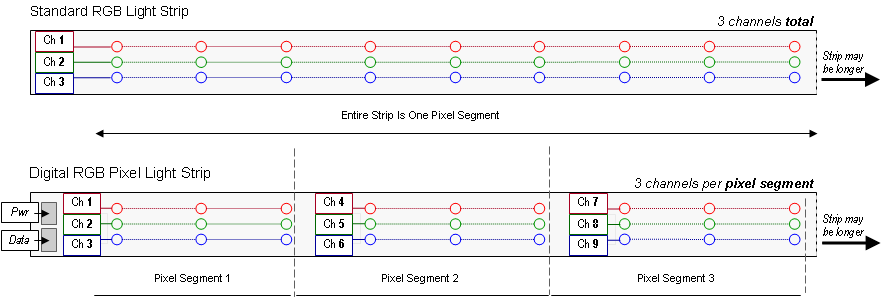RGB vs Pixels
Jump to navigation
Jump to search
What is RGB?
RGB stands for Red, Green, and Blue, the primary additive colors used to create all colors. The RGB Color model allows you to create other colors by mixing selected amounts of each of the primary colors to create new colors. With digital controllers we can control the intensity of each of the three channels assigned to the three primary colors and create a rainbow of colors.
What are the Different Types of RGB Lights?
RGB lights can come in a few different types.
- Pseudo RGB - These are commonly a collection of individual Red, Green and Blue lights that can be turned on and off to provide the primary colors,but do not offer true color mixing. "Super strings" are a common example.
- An example would be three 120VAC strings of 50 LEDs, one string of Red, one string of Green and one string or Blue twisted together. This example would use 3 channels from an AC controller.
- "Dumb RGB" - These are strings, strips or floodlights that have the ability to change colors, but all of the LEDs change to the same color at once,and you require a DC controller to drive them.
- An example would be one string of 50 Dumb RGB nodes. This would use 3 channels of a DC controller hooked up to a DC power supply.
- List of commonly available Dumb RGB Products
- Intelligent RGB (Pixels) - The main difference between "Dumb RGB" and Pixels is the fact that Pixels have a control chip (IC) built into each LED and they can have their color individually controlled independent of each other.
- An example would be one string of 50 Pixels. This would use 150 channels of a Pixel Controller hooked up to a DC power supply.
- List of commonly available Pixels
